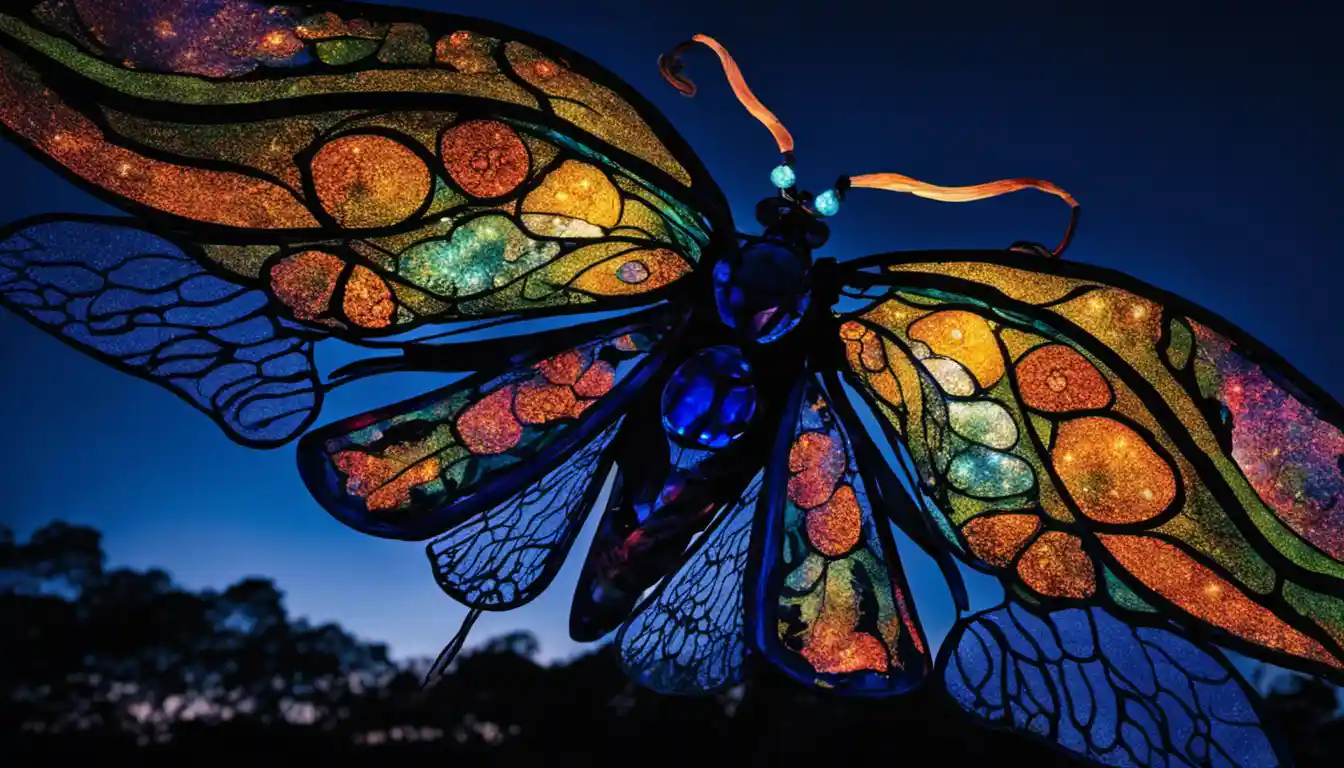The Attraction: Why Are Bugs Attracted to Lights?
Solar lights do not typically attract bugs. This is because they do not produce ultraviolet (UV) light or heat, both of which are common attractants for many types of insects. Some solar lights have been designed specifically to repel insects.
Heat:Lights as a Source of Warmth for Bugs
Many people wrongly assume that bugs are attracted to light sources because of the heat. The reality is, heat plays a secondary role. Insects primarily navigate by light. Some insects are attracted to incandescent, fluorescent and LED lights because they emit small amounts of heat. But solar lights? That’s a different story. Unlike conventional light bulbs, solar lights do not produce heat. As such, bugs that seek warmth will not flock towards your solar lamps.
Wavelength and Bugs: Understanding the Relationship
As a solar energy expert, I’ve often noticed the correlation between the color of light (its wavelength) and bugs’ attraction to it. Bugs are particularly attracted to short-wavelength lights, typically those under 420 nanometers (nm). These include colors like blue and ultraviolet. Luckily, most solar lights do not emit light at these wavelengths, being in the “safe zone”.
The Impact of Wavelengths between 300 nm and 420 nm
The impact is simple and direct: the shorter the wavelength (towards the 300 nm), the more bugs you are likely to attract. So yes, if you have a bluish solar light peaking at this range, you might see more bugs around. But fear not – most quality solar lights sidestep this nuisance.
Specificity of Solar Lights’ Color and Bugs’ Attraction

Alright, let’s dig into this color business a bit more.
Do Red Solar Lights Attract Bugs?
No. Short answer, they don’t. Red solar lights do not attract bugs because they emit long wave light, specifically of wavelengths above 620 nm. This wavelength does not attract bugs and can be safely used without the fear of turning your yard into a bug party.
Blue LED Solar Lights and Bug Attraction: Are There Connections?
Unfortunately, yes. As mentioned earlier, bugs are attracted to short-wave lights, and blue sits comfortably in this range. So if you must use blue LED solar lights, keep them in places where bugs won’t be so much of a nuisance.
Yellow Solar Lights: Bugs’ Haven or Hated Hue?
Yellow outbound? Bugs inbound? Well, not exactly. Contrary to popular belief, yellow lights do not attract bugs. Rather, yellow is one of the few colors that actually repel insects. So, if you’re fearful of turning your yard into a bug convention, consider installing yellow solar lights; you can find some excellent choices on our solar panel lights page.
Searching for a Safe Spectrum: What Color Solar Light Does Not Attract Bugs?
Here’s your safe bet: Solar lights that emit red, orange, yellow or pink are less likely to attract bugs. These colors are at the longer wavelength end of the spectrum, making them less visible to most bugs and thus less attractive.
The Ideal Illumination: What is the Best Light to Keep Bugs Away?

Warm-colored lights – the yellows, oranges, and reds – are your best bet to keep bugs at bay. Not only do they create a cozy ambiance for your outdoor area, these colors do not fall within the spectrum that lures bugs.
Exploring the Alternatives: Outdoor Lights that Don’t Attract Bugs
Maybe you’re now thinking, “Elliot, how about other bug-repellent outdoor lights?” Well, besides solar, there are alternatives designed to keep bugs at bay, including Sodium Vapor, Halogen, and LED lights. However, their environmental impact and energy efficiency do not compare to solar, making solar lights more suitable for long-term use.
Dissecting the Mystery: What Is The Science Behind Bugs Being Attracted To Solar Light?
Insects navigate by the moon and stars, using light as their compass. When there’s scarcity of natural light (as on moonless nights), artificial lights confuse bugs and trap them in an endless loop akin to a moth circling a flame, a phenomenon called ‘phototaxis.’
The Color Spectrum Science: How The Color of Solar Light Attracts Bugs
Well, again, colors matter. For bugs, short-wavelength light is most attractive, as it mimics the natural celestial light they use for navigation.
Feeling the Heat: How The Heat of Lights Attract Insects

While heat doesn’t incite attraction, it becomes a reason for bugs to stay. They are cold-blooded creatures and seek warmth for survival. However, as solar lights do not generate heat, they don’t give bugs a reason to stay.
The Usual Suspects: Which Bugs Are Attracted To Light
Moths, mayflies, beetles, and flying ants are your usual culprits. They are attracted not just by the light itself but also by the polarization of light, a feature most commonly found in water bodies, another bug magnet.
Proactively Preventing: Tips to Keep Bugs Away From Your Solar Lights
Striving for a bug-free outdoor area? Use solar lights with a bug-repelling hue. Direct the lights towards the area of use, not upwards. Keep the vicinity clean, and you can even try adding bug repellants around the light fixtures.
A Bonus Advantage: Do Solar Lights Keep Animals Away?
Solar lights on their own aren’t usually enough to deter animals. However, when combined with motion detectors or flashing lights, they can effectively nab an animal’s attention and deter them, offering an extra layer of protection for your garden or yard.
Conclusion: The Final Verdict on Solar Lights and Bugs
So, do solar lights attract bugs? The long story short is that while light attracts bugs, the kind of light is what brings them around. Solar lights, particularly those that emit yellow, red, or pink light, are an excellent choice to keep bugs away.
What about another question, do solar lights keep animals away? On their own, mostly not – but coupled with motion sensors or flashing lights, they can play a part in ensuring your gardens remain creature-free.
Stay bug-free with the right solar lights, but always remember to practice good outdoor hygiene for an enjoyable bug-free experience.



